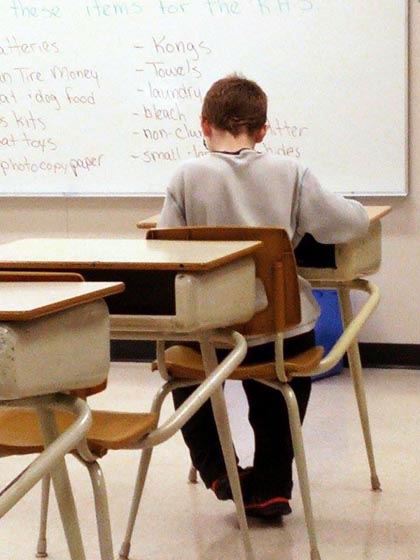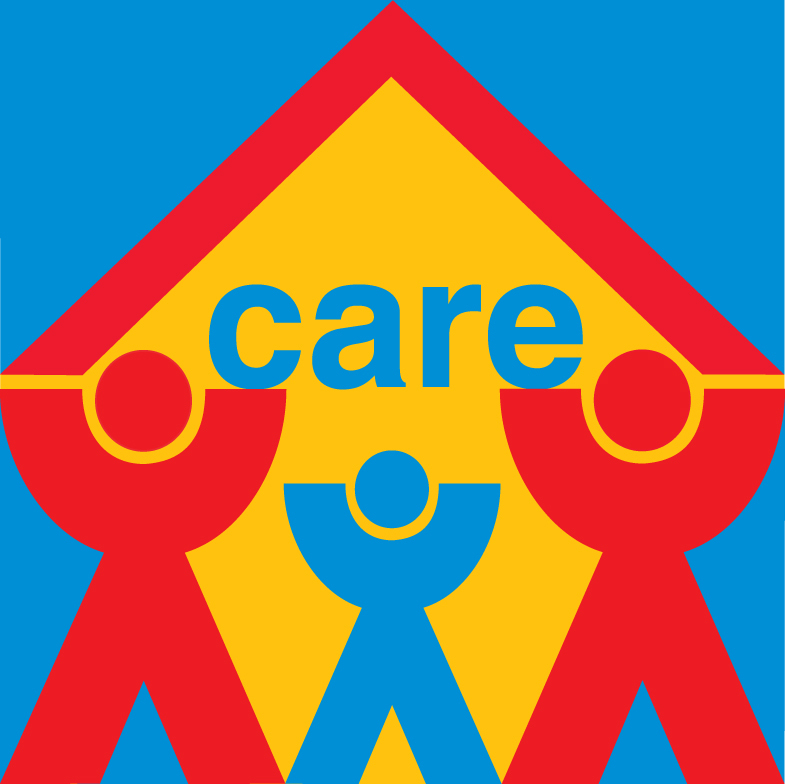Letters of the alphabet cover the walls, books line the shelves, and students sit perched at their desks reading, writing, and colouring.
Ranch Ehrlo Society has delivered specialized education for decades, providing youth with unique opportunities to learn amongst their peers. Years ago, Ranch Ehrlo began renting classroom space from public school divisions in Regina, Saskatoon, and Prince Albert to allow youth the opportunity to slowly integrate into mainstream schools.
Today, Ranch Ehrlo Society operates four elementary classrooms and five high school classrooms in the city of Regina. The Ranch classrooms are similar to mainstream classes however slight differences do exist. Smaller staff-to-student ratios make one-on-one instruction possible; special crisis intervention training helps the teacher and education assistant mitigate difficult situations; and the students carry burdens and baggage that most young people do not.
“I don’t see very many differences between these kids and the mainstream kids,” said Ranch teacher Morgan Williams. “But the challenges that they do have are their life problems.”
 Morgan teaches six students in a recently opened Ranch classroom at Dr. L.M. Hanna Elementary School. The Ranch classroom was previously located within Elsie Mironuck Community School but was squeezed out with increasing enrollments.
Morgan teaches six students in a recently opened Ranch classroom at Dr. L.M. Hanna Elementary School. The Ranch classroom was previously located within Elsie Mironuck Community School but was squeezed out with increasing enrollments.
The spacious room sits at the rear of the school, weaved behind corridors and mainstreams classes. While Ranch youth spend most of their time in their specialized classroom they do spend recess and some visiting hours with the mainstream students. That time increases as they individually progress in their academic studies and behaviours.
When youth first arrive to Ranch Ehrlo they are placed in one of three on-campus schools in the province (Schaller, Ellen Gunn, or Hansen - all accredited by the Independent Schools Branch of the Saskatchewan Ministry of Education) in relation to where they are living. In these special education centres, youth learn routine, build academic skills, and stabilize their behaviours. When they are stabilized and ready to move forward they are placed in a Ranch-operated classroom at a mainstream school, or are moved to the Transition Centre for additional support.
“A lot of consideration and factors go into transitioning a student to a Ranch class at a mainstream school,” explained Ian MacLellan, vice-principal at Schaller Education Centre. “We consider factors such as future plans, staffing, space availability, and more. The goal is to always keep the kids moving forward.”
“Change is really hard for these kids, so we try to make the transition as positive as we can,” said Morgan. “It’s a real science getting to know the kids, but one thing I always use is positive encouragement— these kids need that.”
The benefit of having Ranch staff work in a specialized classroom within a mainstream school is the communication and support shared amongst fellow Ranch staff.
“There is a constant stream of communication between education staff and residential staff,” said Morgan. “If there is something going on in their home life that is going to affect their performance at school we know about it immediately. If a home visit didn’t go well, or if something happened on the ride to school, we hear about it and are prepared for any behaviours that may arise as a result.”
When students show signs of success and progression in a Ranch classroom, they are slowly integrated into a mainstream classroom by spending mornings or afternoons with ‘regular’ students. When they are ready, they move to full days.
“The ultimate goal is to fully integrate the students into mainstream classes but we work slowly to get to that point,” said Ian. “We never want to rush the process where we have to take a step back.”
View more information about Ranch Ehrlo education programs here.


